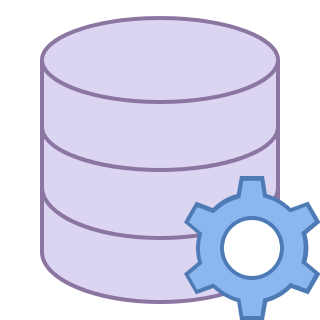Period End View
The Period End View allows you to run the Period Process for any given Entity Set. You can setup the header information, and run the process from this view.
Period End View Features
The Period End view provides all the header information for the Period End process itself at a glance. This includes the main transactional attributes (such as Status) and the dates and parent items for the process to run.
The Period End View is hooked into our Cancel/Correct logic from Base Transactions so automatically provides the correct functionality and security around Period End processing.
The Period End view can work in the following contexts:
- Stand alone showing all period ends for all Entity Sets in the system
- As a view within an Entity Set showing all Period Ends for just that Entity Set
- As a link from a parent item that includes that Period End process in its own calculation process
Period End View Properties
The Period End View has the following properties:
| Name | Description |
|---|---|
| [Required] Entity Set |
The Entity Set this Period End Process will run for. All Transactions for all Entities within the Entity Set Structure will be included in this process. |
| [Required] [Key] Reference |
The auto-incremented unique reference number for this Period End |
| Status | The Transaction Status of this Period End. Can be:
Used for cancel/correct and other Base Transaction logic. See here for more information. |
| Description | A user friendly description of this Period End process |
| Transaction Date | The Transaction Date of this Period End process |
| Data Processing Date | Optional - A date to ensure the calculation runs "As Of" meaning certain transactions will be excluded from this Period End calculation if they were modified after this date/time. This is incredibly useful when different teams are processing different processes at period end. You can exclude those changes from your calculation and pull them in by moving this date whenever you are ready. |
| Include Item Child Transactions Type | Optional - If this Period End is part of another calculation routine it is often the case you will always want to include those latest transactions against that process in this calculation even if they are after the Data Processing Date. This holds the type of item that is the parent. |
| Include Item Child Transactions | Optional - If this Period End is part of another calculation routine it is often the case you will always want to include those latest transactions against that process in this calculation even if they are after the Data Processing Date. This holds he actual parent item that this Period End calculation is a part of. |
Caution
Some of these fields may or may not be available, or editable, depending on the Status of the Period End.
Commands
Note
A Period End View has the standard set of commands and functions when being viewed from a grid. See our standard grid functionality.
When viewed from a Period End, the view also has the following custom commands:
 Recalculate Period End
Recalculate Period End
Recalculates the period end. The main part of this process is running the CreateCapitalAccountData custom SQL Wrapper. Unlock
Unlock
When a Period End is Finalized it is Locked and unable to receive any edits to it. If you Unlock the Period End you will be able to edit it, and if you save those edits the system will perform a Cancel/Correct routine [more info] instead of just updating the Finalized record to have those changes. Cancel
Cancel
Once a record is Finalized you will be unable to Delete that record any longer. Instead you can Cancel the record which will perform our Cancel routine [more info]. Revert Transaction Status
Revert Transaction Status
Sometimes Cancel/Correcting an entire process involves way too much data when all you need to do is change a certain value. This can be especially true for Period Ends that may be part of another finalized process that can involve a lot of data. Rather than cancel/correcting everything you can revert the Transaction status back to InProgress to re-run the calculation again. This can also be used for any Parent process that incorporates the Period End calculation.